Approaching Notes Chromatically
The term chromatic in this context simply refers to a note one half step (fret) down from our target/scale tone. So we're approaching our scale tones from the fret below.
In a moment, we'll look at different ways in which we can approach these scale tones. First, we need to be comfortable with visualizing these chromatic tones around the scale pattern.
Starting with minor pentatonic, we can add in a chromatic tone (the darker
shaded boxes) before each of the five scale tones as
follows...
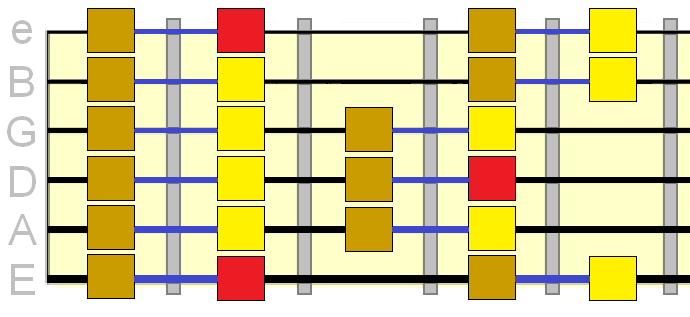
So each scale tone is now linked to a chromatic "approach" tone.
Familiarize yourself with the new pattern by playing through each scale
tone, preceded by its chromatic tone. Just pick each note for now. Here
I'm using A
minor pentatonic with the approach tones in grey.
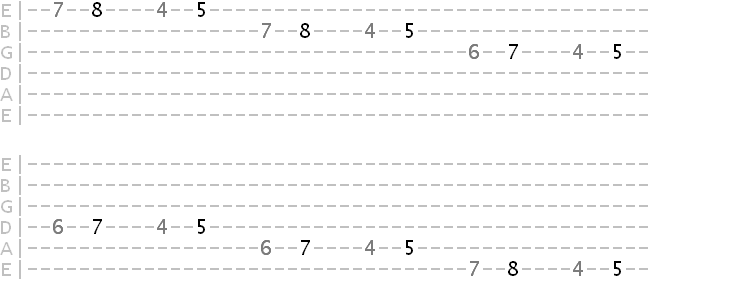
Then it's simply a case of slurring these approaches using techniques such as hammer-ons, slides and bends. This will "soften" the dissonance of the chromatic note as we'll be resolving it quickly to the (harmonious) scale tone.
Hammer Ons
Slides
Bends
Chromatic Phrasing
Once you're confident with moving through the scale pattern like this, try building simple three or four note phrases using different combinations of these three techniques. There are no rules, but refrain from using the chromatic approach on every single note. Let some notes sit naturally in the sequence.
Some examples using A minor pentatonic ( / = slide up
b
= bend h
= hammer on)...

Now try out your own A minor pentatonic ideas over the backing track below...
❱ Download
That's the basic idea, and you can apply it to any scale, lick or solo
your learn.
Start with those basic picked phrases and then add in the approaches to different notes. See how many variations you can create from the same phrase then move on to another phrase. Finally, link them together.
Let's finish with another scale example - Mixolydian...
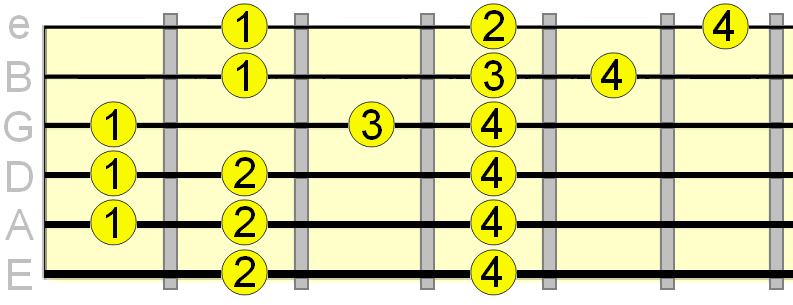
This time, I'm going to repeat notes by picking them as usual and then hammering-on, sliding or bending into them immediately after. Repetition is a great way of emphasizing those strong target notes in your phrases.
Some examples of repetition in B♭ Mixolydian (that's 6th fret using the above pattern)...

Or you could play a more prolonged repetition as follows (you could
replace the hammer ons with slides if you prefer)...
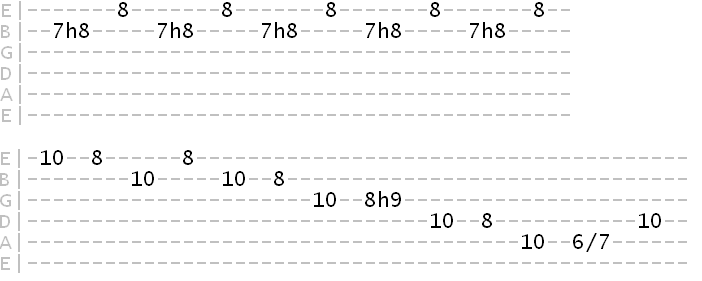
And some more examples of chromatic approach in B♭ Mixolydian...
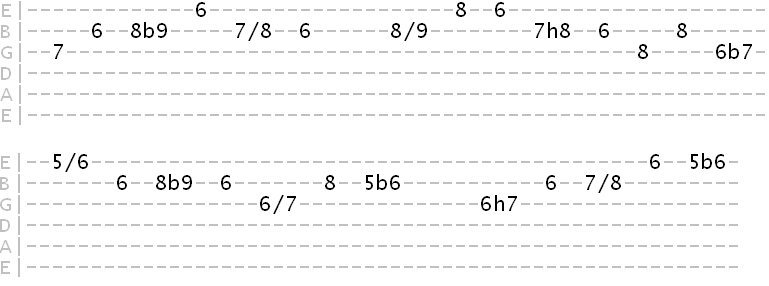
Once again, try jamming out your own ideas over this B♭ Mixolydian track...
❱ Download
See what you can come up with by applying the chromatic approach method to scales and licks you know and turn that flat, lifeless scale plodding into a more sincere musical statement!
Hope you enjoyed it. Feel free to share your discoveries and ideas using this method in the comments below.
